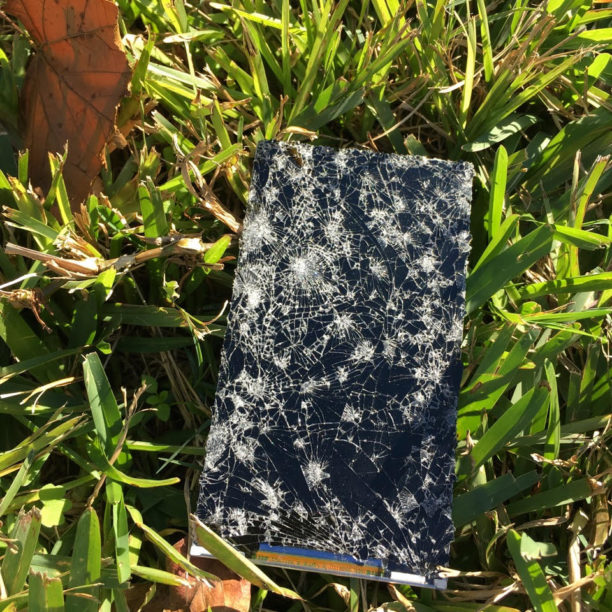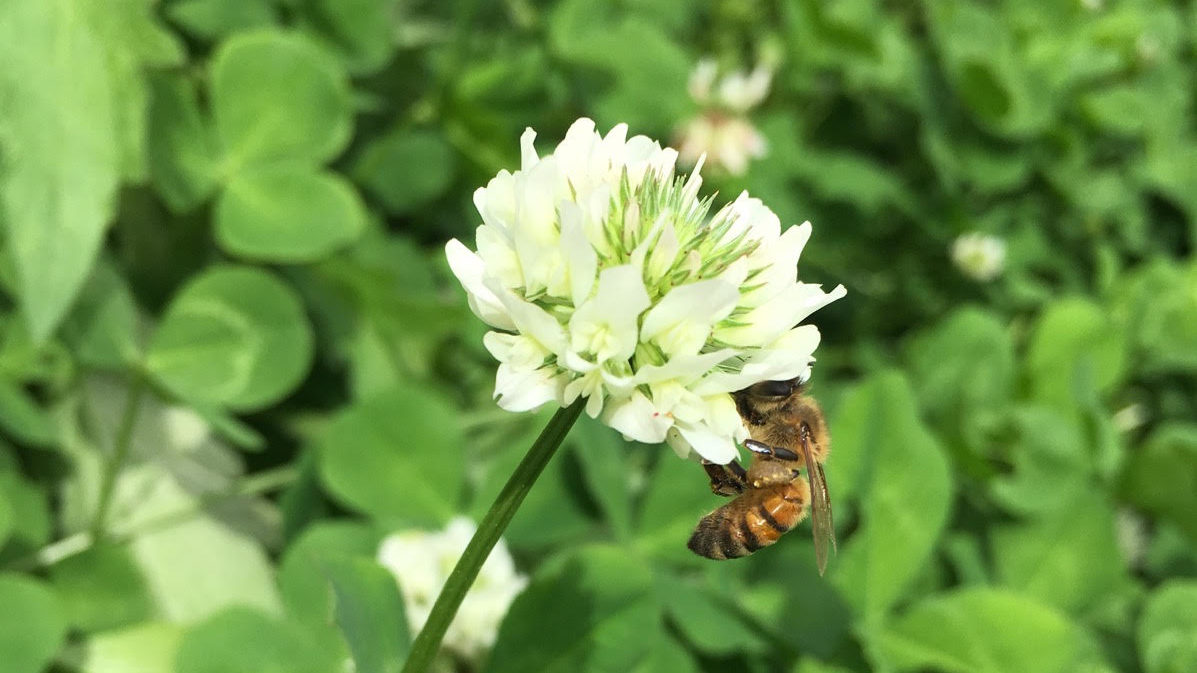Allergies are one thing; if any student has allergies, we stay inside—no debate. But once the lingering summer boil finally releases its hold, autumn in New Orleans is usually quite pleasant for sitting outside and discussing literature and ideas. It’s been harder than usual, though, to coax my students to hold class outside this semester.
I’m talking about discomfort with the physical world outside our campus buildings, things like sitting on grass: many students just won’t do it. They might stand, or we’ve sometimes situated our oval seminar shape so that half of them sat on a sidewalk, while the rest of us sat on grass. With a grungy aesthetic very much the mode on my campus, I don’t think it’s about keeping their J. Crew slacks unblemished. (Everyone’s wearing mom jeans, these days.)
I’m not saying that the grass-sitters are morally superior.
We’re reading Virginia Woolf’s genre-defying Orlando in my class this semester. Nature plays a strange role in this text, as something that the eponymous character worships, but which patently resists being written about. At one point early in the book, this problem is made plain: “Nature and letters seem to have a natural antipathy; bring them together and they tear each other to pieces.” Part of this book is about Orlando’s prolonged struggle to complete a poem called “The Oak Tree.” The poem is based on a real oak tree near Orlando’s childhood home, beneath which Orlando likes to sit and think.
My students think I’m having a little joke when we sit beneath a maple tree on our campus to talk about Orlando. (It’s really just for shade.) We were in the midst of discussing a particular scene—one of Orlando’s “Jay Gatsby” phases, as a student rightly described it—when I saw a couple of them guffawing at the tree trunk behind me. I asked what they were looking at, and someone exclaimed, “There are hella lizards on that tree!”
Sure enough, there were brown anoles all over the bark, chasing each other around and displaying their signature dewlaps. By some accounts, a recent population explosion has led to these invasive reptiles being far more visibly present around New Orleans in recent years.
About ten minutes after the brown anole incident, another student shrieked and jumped up as an insect arced over her leg. “It’s a cicada!” The two next to her scattered, and a fourth stood up and promptly stomped on the critter as it trundled across the sidewalk. Several of their classmates gasped in horror; one or two cheered. It hadn’t looked like a cicada to me: when I went over to examine the remains, I found it was a chubby mole cricket, a kind we rarely see because they burrow. It was twitching with its last efforts at life.
I couldn’t tell if the student who had killed it felt guilty or proud, or a bit of both. But it took us a few minutes to get back on track. In a bizarre coincidence, we landed on a page where we learn that Orlando “could not endure to see a donkey beaten or a kitten drowned.” What about mole crickets squashed?
There are innumerable distractions when teaching a class outside. Friends ambling across campus, ongoing maintenance projects, cute service animals, F-15s screaming overhead while practicing for urban warfare…. But in my experience, this also makes class more immediate. We really have to work to pay attention, to follow a thread, to articulate a point. We have to read passages out loud clearly and with more intensity—to make them heard over the sounds of lawn care equipment whining or crows cawing in the palm trees.
But when the students can’t stop obsessing about the ants beneath them—not the biting fire ants, just normal little black ants—or even bear to repose on the ground, class gets extra challenging.
My colleague Hillary Eklund—who, like me, works on environmental themes in literature and culture—corroborated my experience when I shared my flustered state with her after class; she’d had a stander in a recent outside class, too, and said her students were generally not happy about being outside.
“What is going on?” I asked.
“It’s ecophobia.”
In his book on the subject, Simon Estok defines the term “ecophobia” as “a uniquely human psychological condition that prompts antipathy toward nature.”
If our students are more ecophobic than they’ve been in the past, this is curious. For one thing, they’re more aware than ever of climate change and rising sea levels, not to mention our own disappearing coast. Why would they be scared of what’s right outside the classroom?
Strolling across campus one afternoon, I watched as a student in front of me glared up at the sun, which was preventing him from reading his smartphone. It was an odd moment. He appeared completely annoyed at this obtrusive thing in the sky—that makes our lives on this planet possible in the first place.
Today’s college students have lived much of their lives with smartphones, and I think this is one of the latent causes of ecophobia. On the smartphone, everything is contained, curated, compartmentalized—even news of environmental catastrophe. Furthermore, smartphones function best inside. (That’s where the power is, too.) Sure, we use smartphones everywhere we go, inside and outside. But their natural habitat, so to speak, is a climate controlled, light controlled interior—preferably near an outlet.
Being outside for a sustained period—75 minutes, in our case—might be scary in part because it’s harder to use a phone as effortlessly as we’ve become accustomed to. Without desks in front of everyone, it’s harder to conceal smartphone use during class. That pesky sun gets in the way. And then, all the other creatures and features of our extended biome start making their presence known. If smartphones work hard to produce a feeling of a whole world in one’s palm, the outside world disrupts this feeling in subtle and not so subtle ways.
Ecophobia, then, might be in part a natural response to the low-grade anxiety of one’s smartphone being put in its place—or rather, put out of its place.
There was one class last spring that subverted this trend. I had just handed out a poem from that week’s New Yorker, “April,” by Sandra Simonds. The poem begins, “The red bird falls from the tree, lands on / its head. Rolls / right back onto its feet. Hello spring. / Hello, sanity. Hello, trashfire century.”
We were sitting in a courtyard outside the music building, and as we settled in and started to discuss the poem that I’d handed out, we heard a faint thump against a window above us.
A sparrow hit the ground within a few feet of our class circle. We watched its thin tarsus and delicate toes rigidify as it died; its eyes clouded into a matte black. My students were flabbergasted; the moment was uncanny, to say the least.
It was one of those teaching moments that I live for. When everything converges, and learning and real life are suddenly exposed as one and the same. There we were reading a poem about the precarious, anxious life of our moment, when BAM. Objective correlative.
One student was particularly distraught by the incident, and after class a few of us moved the dead bird off the concrete slab and to the base of a nearby tree, where we built a small tomb out of twigs. We assured one another that the bird would be better recycled into the circle of life, here.
This day galvanized our class in a funny way. As if, after that serendipitous crash, my students realized that literature isn’t just about ideas or florid language, but about the real world we all live in, and depend on for survival.
**
Of course the inside/outside binary doesn’t hold up with even the most cursory ecological perspective. These buildings, these phones, even these letters (to use Woolf’s word) are part of our extended phenotype. We are another species doing its thing on this planet, for better and for worse. There is no getting outside of nature—this is it, all of it.
My students make connections that I could never anticipate. This semester I received an excited email from a student one weekend, with the subject line “Orlando is EVERYWHERE,” with a linked article about how the MET Gala theme this year had been inspired by Orlando. My students know far more about the burgeoning world than I do; the limits I fear may just be my own limits.
So the truth is that I may be suffering from my own form of ecophobia. If I’m honest, I have to say that I don’t know how to handle the influx of phones in the classroom, or the rapidly changing dynamic on college campuses due to the normalized option (or even preferred mode) of online education, which is altering long-held realities of traditional university life. Airplanes increasingly unsettle me, not just thundering across the sky but as speculative or grounded metonymies of the Anthropocene, as well. I’m freaked out about the world in its present state. My students and I are in this together: working to live in and learn from this world, even with trepidation.
 courtesy of the author
courtesy of the author





